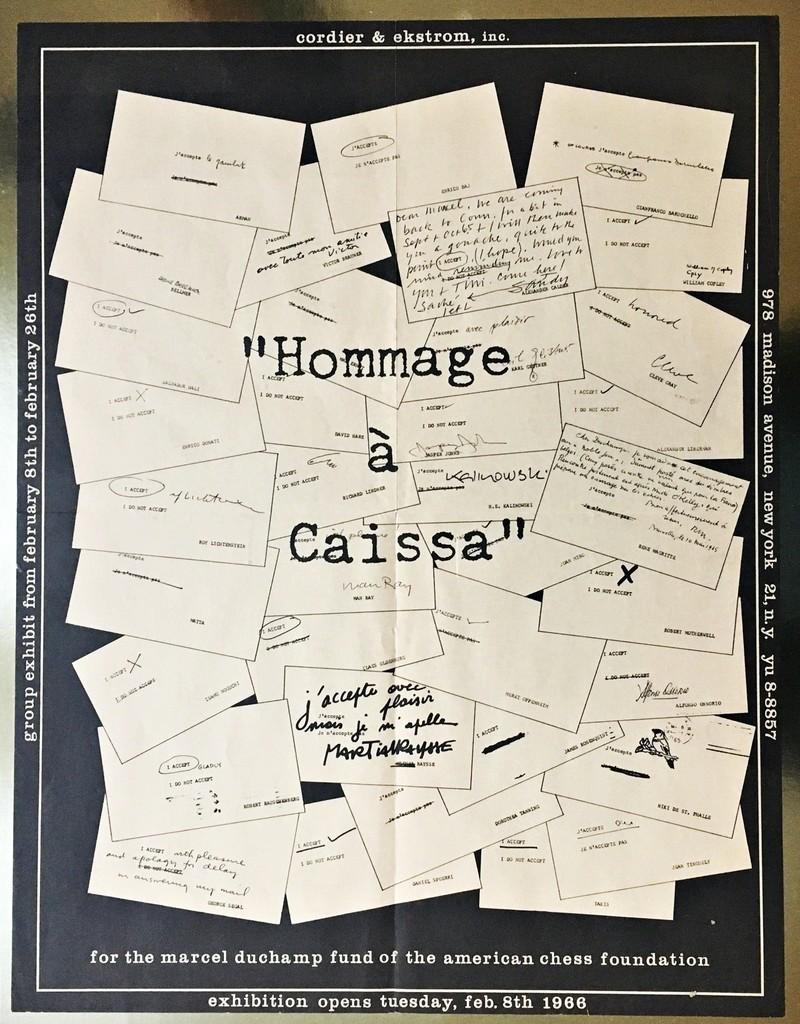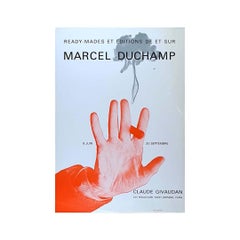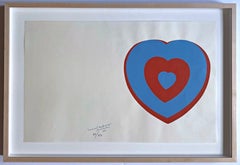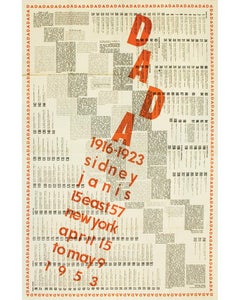Questions & Answers
Our trusted network of 1stDibs sellers answer common questions
What was Marcel Duchamp's famous sculpture of Dadaism?
1 Answer

Marcel Duchamp's famous sculpture of Dadaism is widely considered to be Fountain. Its name was a playful subversion that shocked viewers when it was exhibited in 1917. The reason for the surprise? Duchamp's so-called “fountain” was actually a urinal. Although the original piece was either lost or destroyed, several museums have authorized reproductions of the work in their collections. Among them are the Philadelphia Museum of Art in Philadelphia, Pennsylvania; the San Francisco Museum of Modern Art in San Francisco, California; the Tate Modern in London, UK, and the Moderna Museet in Stockholm, Sweden. Explore an assortment of Marcel Duchamp art on 1stDibs.
1stDibs ExpertJanuary 19, 2025
Related Questions
- Was Marcel Duchamp a Surrealist artist?1 Answer
- What is marcel breuer famous for?1 Answer
- Is Dadaism anti-art?1 Answer
- What is the most famous Etruscan sculpture?1 Answer
- Who is famous for bronze sculptures?1 Answer
Shop for Marcel Duchamp Art on 1stDibs
1967 Exhibition original poster by Marcel Duchamp - Ready mades - Dada -
By Marcel Duchamp
Located in PARIS, FR
Marcel Duchamp was one of the pioneers of Dada, a movement that challenged preconceived notions of what art should be and how it should be made. In the years leading up to World War I, Duchamp enjoyed success as a painter in Paris. But he soon abandoned painting almost entirely, explaining, "I was interested in ideas, not just visual products."
Seeking an alternative to representing objects in paint, Duchamp began to present objects as art...
Category
1960s Dada Prints and Multiples
Materials
Lithograph, Paper
Coeurs Volants (Fluttering Hearts) Schwartz 446C, historic hand signed edition
By Marcel Duchamp
Located in New York, NY
Marcel Duchamp
Coeurs Volants (Fluttering Hearts) (Schwartz 446C), 1961
Silkscreen in colors
Hand signed in ball-point pen by Marcel Duchamp and annotated with the dateline "Stockhol...
Category
1960s Dada Abstract Prints
Materials
Screen, Pencil
International DADA Exhibition 1916-1923.
By Marcel Duchamp
Located in New York, NY
DUCHAMP, Marcel. International DADA Exhibition 1916-1923. Large Poster printed in black and orange, designed by Duchamp. Single sheet, 965 x 635 mm, (38" x 25"). New York: Sidney Janis Gallery, 1953. Folded.
A fine copy of this extremely rare Duchamp poster...
Category
1950s Dada Prints and Multiples
Materials
Paper
Rrose Sélavy in Wilson-Lincoln System Lenticular print (Schwarz 344) Signed 8/60
By Marcel Duchamp
Located in New York, NY
Marcel Duchamp and by Takiguchi
Rrose Sélavy (Marcel Duchamp) in Wilson-Lincoln System (Schwarz, 344), 1967
Lenticular print on thin white board. Hand signed by Marcel Duchamp. Date, title and number on label verso.
12 7/10 × 10 1/10 inches
Edition 8/60
Hand-signed by artist, Hand signed by Marcel Duchamp in blue ink recto. Sticker label verso bears printed title, edition number, year and description.
Printed by Shuzo Takiguchi, published in Tokyo.
Catalogue Raisonne Reference: "The Complete Works of Marcel Duchamp" by Arturo Schwarz, Plate 344
Provenance: This was part of the Deluxe Artist portfolio, "To and From Rrose Sélavy"; this will be the first time the work has been separated from the portfolio
Please refer to the attached video to see this 3-D piece in person
Eager to share Marcel Duchamp with Japanese audiences, Shuzo Takiguchi - a Japanese-born poet, critic, and artist with ties to Surrealist circles, assembled an international portfolio of graphic works by various artists with strong ties to Duchamp, to accompany the deluxe version of his monograph, "To and From Rrose Sélavy (aka Marcel Duchamp)." The present work - Takiguchi's own piece, a lenticular double portrait - combines Rrose Sélavy's signature with Man Ray's 1930 profile of Duchamp. Its subject, Marcel Duchamp, then signed this work in pencil. Its title, "Rrose Sélavy in the Wilson-Lincoln System", refers to Duchamp's Green Box note describing a two-way, changeable portrait of presidents Abraham Lincoln and Woodrow Wilson. Rrose Selavy is, famously, Marcel Duchamp's pseudonym and alter ego. Duchamp died before Takiguchi's book was completed, so this print is one of the very last graphic works that has been hand signed by Marcel Duchamp. It was published in Japan, and is a very elusive work stateside. Another edition of this work is in the permanent collection of the Museum of Modern Art. The National Portrait Gallery and other major institutional collections. This work is fully referenced in the catalogue raisonne "The Complete Works of Marcel Duchamp" by Arturo Schwarz, Plate 344, describing the work as follows: "Rrose Selavy in the Wilson Lincoln System (a double image plastic plate with, on the background, Man Ray's portrait of Duchamp, and superimposed,, Rrose Selavy's autograph signature repeated four times, signed lower right in blue ink: Marcel Duchamp, an original embossed print...."
More about Marcel Duchamp:
Henri-Robert-Marcel Duchamp was born July 28, 1887, near Blainville, France. In 1904, he joined his artist brothers, Jacques Villon and Raymond Duchamp-Villon, in Paris, where he studied painting at the Académie Julian until 1905. Duchamp’s early works were Post-Impressionist in style. He exhibited for the first time in 1909 at the Salon des Indépendants and the Salon d’Automne in Paris. His paintings of 1911 were directly related to Cubism but emphasized successive images of a single body in motion. In 1912, he painted the definitive version of Nude Descending a Staircase; this was shown at the Salon de la Section d’Or of that same year and subsequently created great controversy at the Armory Show in New York in 1913.
Duchamp’s radical and iconoclastic ideas predated the founding of the Dada movement in Zurich in 1916. By 1913, he had abandoned traditional painting and drawing for various experimental forms, including mechanical drawings, studies, and notations that would be incorporated in a major work, The Bride Stripped Bare by Her Bachelors, Even (1915–23; also known as The Large Glass). In 1914, Duchamp introduced his readymades—common objects, sometimes altered, presented as works of art—which had a revolutionary impact upon many painters and sculptors. In 1915, Duchamp traveled to New York, where his circle included Katherine Dreier and Man Ray, with whom he founded the Société Anonyme in 1920, as well as Louise and Walter Arensberg, Francis Picabia, and other avant-garde figures.
After playing chess avidly for nine months in Buenos Aires, Duchamp returned to France in the summer of 1919 and associated with the Dada group in Paris. In New York in 1920, he made his first motor-driven constructions and invented Rrose Sélavy, his feminine alter ego. Duchamp moved back to Paris in 1923 and seemed to have abandoned art...
Category
1960s Surrealist Figurative Prints
Materials
Plastic, Mixed Media, Board, Pencil, Lenticular
Marcel Duchamp, Monte Carlo Bond, from XXe siecle, 1939
By Marcel Duchamp
Located in Southampton, NY
This exquisite lithograph by Marcel Duchamp (1887–1968), titled Bond de Monte-Carlo (Monte Carlo Bond), from the album XXe siecle, Chroniques du jour, 13 rue Valette (5e), Directeur ...
Category
1930s Dada Landscape Prints
Materials
Lithograph
$7,196 Sale Price
20% Off
Free Shipping
1947 original engraving by Marcel Duchamp - Coffee Mill
By Marcel Duchamp
Located in PARIS, FR
This rare 1947 original engraving, Coffee Mill, by Marcel Duchamp is a profound example of his conceptual approach to mechanical imagery and Dada aesthetics. Signed by the artist and...
Category
1940s Prints and Multiples
Materials
Paper, Engraving


